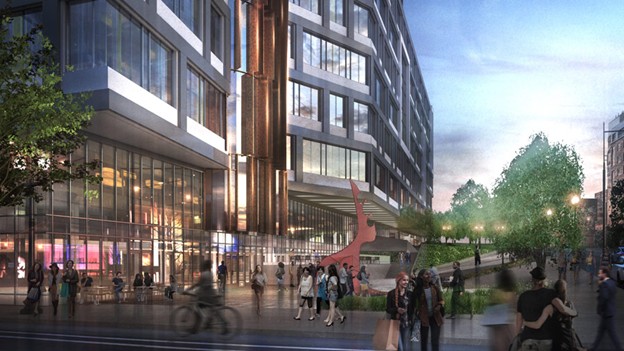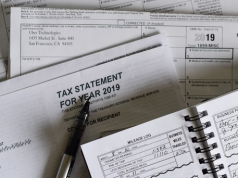Walkable neighborhoods have evolved from a luxury into a foundational element of smart urban planning. But building truly pedestrian-friendly communities goes far beyond simply pouring concrete for sidewalks or painting crosswalks. It requires a holistic, coordinated approach, blending infrastructure, thoughtful design, equitable policies, and active community participation.
Whether reimagining dense urban districts or retrofitting sprawling suburbs, cities are recognizing that walkable neighborhoods pay dividends: they stimulate local economies, lower emissions, improve mental and physical health, and foster stronger social ties. Real estate developers are playing a growing role in shaping these walkable ecosystems by integrating retail, housing, and public space to create places where people want to live, work, and move on foot.
So what does it really take to make a neighborhood walkable and keep it that way?
Mixed-Use Zoning: Where Everything’s Within Reach
At the heart of walkability is proximity. People are more likely to walk when essential destinations, grocery stores, schools, cafés, parks, offices, are close to home. That’s where mixed-use zoning comes in. Unlike traditional single-use zoning that segregates residential, commercial, and industrial activities, mixed-use zoning allows these elements to coexist within the same area.
Successful walkable neighborhoods typically blend residential units with small businesses, services, and green space, allowing residents to run errands, meet friends, or commute without relying on a car. It’s this “15-minute city” concept, where most daily needs can be met within a 15-minute walk, that has gained traction worldwide as a framework for sustainable living.
High-Quality Sidewalks and Streetscapes
You can’t have walkability without walkways. Yet not all sidewalks are created equal.
A truly walkable neighborhood features wide, well-maintained sidewalks with ample lighting, shade from street trees, and buffers like landscaping or bike lanes that separate pedestrians from traffic. Crosswalks are visible, curb cuts are smooth and accessible, and intersections are designed to prioritize safety over speed.
Streetscapes should feel inviting, not just functional. Public art, benches, pocket parks, and community gathering spots help transform the journey from point A to point B into a pleasant experience. A walkable neighborhood is one where the sidewalk is not just a path, but a place.
Density Done Right
Walkability depends on people. It’s simple math: the more people living within a small geographic area, the more viable it is to support nearby amenities like markets, restaurants, transit stops, and medical offices.
But high density doesn’t have to mean towering high-rises. Smart density can be achieved through a mix of housing types: townhouses, duplexes, triplexes, small apartment buildings, and accessory dwelling units (ADUs). The goal is to create enough population to support vibrant, local services while maintaining a human-scale environment.
Developers and planners increasingly recognize that density, when paired with green space, noise control, and good urban design, actually enhances quality of life. It reduces infrastructure costs, lowers commute times, and supports walkability.
Transit Access and Connectivity
Walkable neighborhoods don’t exist in a vacuum. To be truly functional, they must connect to the broader city, especially for people who work, attend school, or need access to services outside the immediate area.
Bus stops, light rail stations, bike-share docks, and safe bike paths allow people to extend their walking journeys efficiently. A walkable neighborhood is often a transit-oriented one, designed to reduce car dependency by giving people real alternatives.
Planners also consider permeability, such as how easy it is to move through a neighborhood. Grid-style street networks with frequent intersections (as opposed to cul-de-sacs) make walking routes more direct, efficient, and intuitive.
Eyes on the Street: Safety and Social Trust
A successful walkable community is one where people feel safe, physically, emotionally, and socially. Jane Jacobs, the famed urbanist, coined the phrase “eyes on the street” to describe how pedestrian traffic, active storefronts, and engaged neighbors create natural surveillance that deters crime.
Walkable neighborhoods often include:
- Street-facing homes with porches or windows near the sidewalk
- Mixed-use buildings with ground-floor retail
- Lighting that improves visibility without harshness
- Public plazas and parks that attract everyday activity
These design features foster social interaction and community pride, which in turn creates safer and more welcoming streets.
Retail That Serves the Community
Local businesses are a linchpin of pedestrian-friendly neighborhoods. They provide essential services, activate the street, and create places where residents interact.
However, walkable retail doesn’t just happen, it requires careful planning:
- Commercial spaces must be appropriately sized for small businesses
- Rents must be reasonable enough to support local entrepreneurs
- Regulations should encourage neighborhood-serving shops (not just chains)
In revitalized areas, builders and city officials are increasingly working together to ensure that commercial tenants reflect the needs and character of the surrounding community. In some cases, retail incubators or community land trusts are used to secure affordable space for local vendors.
Green Infrastructure and Climate Resilience
Walkability isn’t just about mobility, it’s also about livability. Trees, stormwater gardens, permeable sidewalks, and green roofs help cool the neighborhood, reduce pollution, and mitigate flooding.
These elements not only support environmental goals but make walking more comfortable. In hot cities, shade can mean the difference between walking and driving. In rainy climates, good drainage prevents puddles and erosion. Investing in green infrastructure ensures walkable neighborhoods can withstand the pressures of climate change.
Community Engagement and Cultural Relevance
No amount of design can substitute for the lived experience of residents. Walkable neighborhoods thrive when local voices are involved from the beginning, especially in communities that have historically been excluded from planning processes.
Culturally relevant placemaking, bilingual signage, community art, and inclusive public spaces all help ensure that the neighborhood reflects the people who live there. People walk when they feel a sense of belonging.
Ongoing Investment and Policy Support
Finally, walkable neighborhoods are not one-time projects, they require ongoing stewardship. Maintenance, funding, and policy reinforcement are crucial to sustaining the infrastructure and social fabric that make walkability possible.
This includes:
- Enforcing safe-speed limits and pedestrian-first traffic laws
- Repairing sidewalks and signage
- Supporting affordable housing to prevent displacement
- Providing incentives for developers to build walkable infrastructure
City councils, transportation departments, and real estate developers all play a role in maintaining the conditions that allow walkable neighborhoods to thrive over time.
A Blueprint for Human-Centered Design
Creating a walkable neighborhood is a mindset. It’s about building places where people want to live, work, and play on foot. It requires smart zoning, thoughtful design, transit access, and a deep respect for local identity.
Walkability enhances physical health, lowers carbon emissions, builds social capital, and stimulates local economies. It’s one of the clearest pathways to creating cities that are more equitable, joyful, and resilient. And while walkable neighborhoods may look different depending on geography or culture, the core principles remain the same: access, safety, community, and connection.
With coordinated effort from planners, policymakers, developers, and residents, walkable communities are not just possible, they’re essential for the future of urban life.









